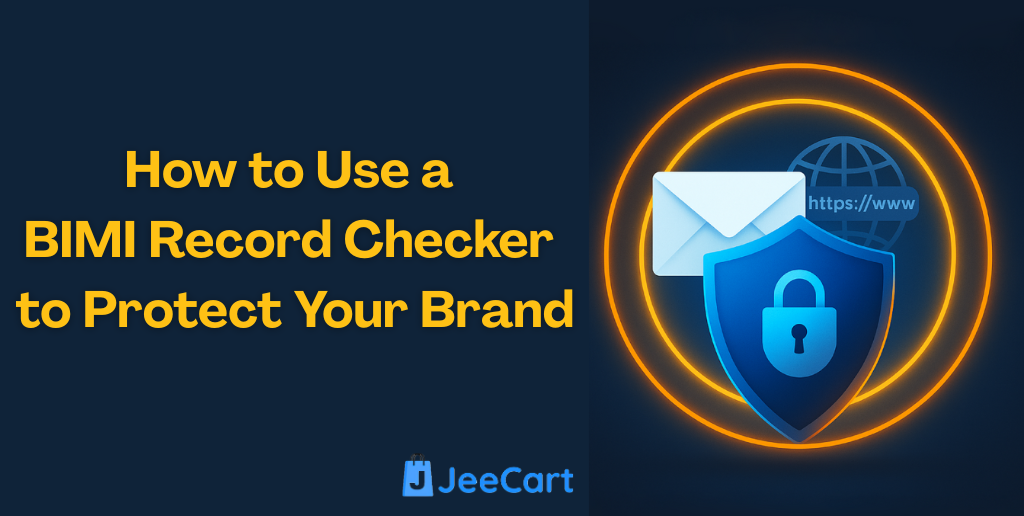
In the sprawling digital ecosystem where email reigns supreme as a primary communication channel, protecting your brand’s visual identity is no longer optional—it’s essential. Enter Brand Indicators for Message Identification (BIMI), an innovative email security and email branding standard designed to bolster your domain’s email authenticity and enhance email deliverability by displaying your official logo alongside authenticated emails. Leveraging a BIMI record checker helps enforce this protective layer by ensuring your BIMI record is accurately configured and fully compliant with established protocols. Let’s dive deep into understanding BIMI, how BIMI record checkers work, and the best practices to safeguard your brand with BIMI.
Understanding BIMI and Its Importance for Brand Protection
BIMI represents a transformative shift in how organizations signal trust through email. By publishing a BIMI record— a DNS TXT record linked to your domain—companies embed a pointer to an SVG logo that receivers’ email clients can display. This visual email identity serves as a powerful email trust signal, quickly reassuring recipients that the message is legitimately from the brand they know and trust.
Why does this matter so profoundly for brand protection? Because email remains a prime vector for phishing attacks and email spoofing, both of which damage email reputation and compromise customer trust. BIMI adoption, especially when paired with robust email authentication protocols like DMARC, SPF, and DKIM, strengthens email phishing protection and sender authentication. Email domain alignment—where the domain in the ‘From’ header matches the authenticated domain—boosts email deliverability while helping to thwart malicious actors from impersonating your email domain.
This shift towards visual authentication benefits entities ranging from Google and Microsoft to security leaders like Valimail, Dmarcian, and Proofpoint, who advocate BIMI as part of a layered defense in email security. Rachel Tobac, a renowned cybersecurity expert, often highlights BIMI’s role in reducing successful phishing attacks, making BIMI an essential tool in email marketing and enterprise email filtering strategies.
What Is a BIMI Record Checker and How Does It Work?
Simply put, a BIMI record checker is a specialized DNS query tool designed to perform a thorough DNS record lookup against your domain’s DNS TXT records to verify the presence, correctness, and compliance of your BIMI record according to the BIMI standard. These tools probe your DNS infrastructure to confirm correct TensorFlow for your BIMI selector, verify the hosted SVG logo meets security guidelines (including proper logo verification), and ensure domain verification steps have been completed, often requiring a Verified Mark Certificate (VMC certificate) issued by an authorized certificate authority.
How does this elevate your brand protection? By identifying misconfigurations in real-time—whether it’s a missing or malformed DNS TXT record, issues with DNS propagation delays, or errors in your email server configuration—a BIMI record checker enables corrective measures before email clients (like Gmail or Microsoft Outlook) fail to render your logo, which could otherwise undermine your visual email identity and trust signals.
Tools like the ValiMail BIMI Inspector, EasyDMARC BIMI Lookup, and others from organizations such as MarkMonitor or Agari provide invaluable insights for SMTP administrators and email marketing professionals alike. They often combine email header analysis alongside BIMI checks, optimizing your overall email domain policy and sender authentication strategy.
Step-by-Step Guide to Using a BIMI Record Checker Tool
Here’s a practical walkthrough for leveraging a BIMI lookup to preserve and protect your brand assets and email reputation:
1. Gather Your Domain Information: Start with your sending domain and ensure your email authentication framework is in place. This means your domain’s DMARC, SPF, and DKIM records must be fully configured and enforced, since BIMI requires a strict DMARC policy for email domain alignment and sender authentication.
2. Access a BIMI Record Checker: Choose a reliable tool such as the BIMI lookup, MailHardener BIMI Validator, or Dmarcian BIMI inspection platforms. These DNS query tools provide comprehensive reports on your BIMI record’s status.
3. Enter Your Domain: Input your domain name into the BIMI record checker. The tool performs DNS TXT record lookups to verify your BIMI selector, validate DNS propagation, check email clients support for BIMI, and assess your SVG logo’s conformity.
4. Analyze the Report: The output reveals crucial findings—whether the BIMI record exists, if the SVG logo is accessible and meets the standard, and if your DNS and VMC certificate are correctly configured.
5. Implement Fixes: Address any flagged issues, from updating invalid BIMI selectors to renewing your verified mark certificate or resolving delays in DNS propagation. Email server configurations sometimes need tweaking to align with the BIMI standard fully.
Using these tools regularly can guarantee your domain’s BIMI record remains authoritative, improving your email marketing campaigns’ effectiveness by elevating your brand visibility through trusted visual cues.
Common Issues Detected by BIMI Lookup Tools and How to Fix Them
As someone deeply involved in email security, I’ve seen the full gamut of BIMI implementation hiccups. Using a BIMI record checker can surface a variety of issues:
- Missing or Incorrect BIMI Record: This is the most straightforward problem. Without a proper DNS TXT record for BIMI, email clients won’t display your logo. Solution: Create or correct your BIMI DNS TXT record using trusted BIMI generators like BIMI Group’s BIMI Generator.
- SVG Logo Non-compliance: The BIMI standard requires a square, monochrome SVG logo adhering to strict security standards. If your SVG does not meet these requirements or is inaccessible via the URL in the BIMI record, emails may lack branding. Fix this by optimizing your SVG or hosting it securely.
- Lack of Verified Mark Certificate (VMC): For major email clients such as Google, the presence of a valid VMC certificate is mandatory to show the logo. BIMI checkers flag missing or expired certificates. Obtain a VMC from authorized providers and install it correctly in your DNS.
- Delayed DNS Propagation: Changes to DNS TXT records can take time to propagate globally. BIMI lookup tools often report inconsistencies due to this. Patience and verified propagation via DNS propagation monitoring tools resolve this lag.
- DMARC Enforcement Not Met: BIMI depends on a strict DMARC policy (quarantine or reject) to ensure alignment for sender authentication. Without it, your BIMI record won’t trigger logo display. Review and strengthen your DMARC policy accordingly.
Sometimes the issue is subtle, such as discrepancies discovered through email header analysis indicating domain misalignment. Leaders like Rachel Tobac advocate continuous monitoring using tools from well-known vendors like Return Path or Proofpoint to keep your email domain reputation pristine.
Best Practices for Maintaining BIMI Records to Maximize Brand Trust
Maintaining BIMI records is not a set-and-forget task, especially as email threats evolve and email marketing strategies scale. Here are best practices I trust for enhancing email trust signals and maintaining a strong visual email identity:
- Regular DNS Record Lookup Audits: Routinely perform DNS TXT record checks using BIMI record checker tools like those from Mimecast or The SSL Store to ensure your BIMI record and associated email domain policy remain pristine.
- Coordinate with Email Security Teams: Work closely with email server configuration specialists to synchronize BIMI deployments with broader email authentication mechanisms SPF, DKIM, and especially DMARC—to tighten email filtering and minimize spoofed emails.
- Update and Verify Your SVG Logo: Brand visuals evolve; ensure your SVG logo is updated and passes logo verification in your BIMI record and complies with the BIMI standard. Hosting the logo on secure, reliable platforms improves uptime and email clients’ consistent opening.
- Maintain VMC Certificates: Keep tabs on your Verified Mark Certificate expiration and renew on time if applicable. The VMC certificate underpins the legitimacy of your BIMI record in receiving email clients that enforce this level of trust.
- Monitor Email Deliverability and Reputation: Employ email reputation monitoring services, such as Agari’s or MarkMonitor’s tools, to measure how BIMI impacts your email marketing outcomes. Positive visual email identity enhances open rates and customer confidence.
- Educate Stakeholders: Champions like Microsoft and Google emphasize BIMI adoption; internal marketing, security, and IT teams should understand BIMI’s role in a multi-layered authentication framework to effectively support and troubleshoot.
By embracing these evolving practices and utilizing trusted DNS query tools and BIMI checkers across your email infrastructure, you harness one of the most robust defenses against email phishing and spoofing, thereby enriching customer trust through reliable email trust signals.







